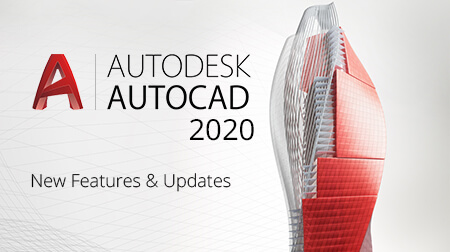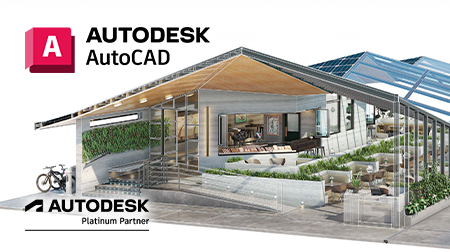Levels of Development / Levels of Detail / LOD explained
By Bill Adams, Redstack
IF you're venturing into the world of BIM (Building Information Modeling), you're likely to come across a bunch of acronyms, including LOD. What is LOD you ask?
The Level of Development (LOD) framework addresses several issues that arise when a BIM is used as a communication or collaboration tool, that is, when someone other than the designer extracts information from it. During the design process, building systems and components progress from a vague conceptual idea to a precise description.
In the past there has been no simple way to designate where a model element is along this path. The designer knows, but others often don’t. It’s easy to misinterpret the precision at which an element is modelled. Hand drawings range from pen strokes on a napkin to hard lines with dimensions called out, and it’s easy to infer the precision of the drawing from its appearance. In a model though, a generic component placed approximately can look exactly the same as a specific component located precisely, so we need something besides appearance to tell the difference.
It is also possible to infer information from a BIM that the designer doesn’t intend – unstated dimensions can be measured with precision, assembly information often exists before it’s been finalized, etc. In the past, this issue has been sidestepped with all-encompassing disclaimers that basically say, “Since some of the information in the model is unreliable, you may not rely on any of it.”
The LOD framework allows model authors to clearly state the reliability of given model elements, so the concept becomes “Since some of the information in the model is unreliable, you may only rely on it for what I specifically say you can.” In a collaborative environment, where people other than the model designer are depending on information from the model in order to move their own work forward, the design work plan takes on high importance – it is necessary for the model users to know when information will be available in order to plan their work. The LOD framework facilitates this.
Level of Development vs. Level of Detail
LOD is sometimes referred to or interpreted as Level of Detail rather than Level of Development.
There are important differences. Level of Detail is a measure of the amount of information provided. Because it is only a measure of quantity, the underlying assumption is that all provided information is relevant to the project and so can be relied upon with certainty.
Level of Development is the degree to which the element’s geometry and attached information has been thought through – the degree to which project team members may rely on the information when using the model. In essence, Level of Detail can be thought of as input to the element, while Level of Development is reliable output.
LOD Definitions…

LOD 100: The Model Element may be graphically represented in the Model with a symbol or other generic representation, but does not satisfy the requirements for LOD 200. Information related to the Model Element (i.e. cost per square foot, tonnage of HVAC, etc.) can be derived from other Model Elements.
LOD 200: The Model Element is graphically represented within the Model as a generic system, object, or assembly with approximate quantities, size, shape, location, and orientation. Non-graphic information may also be attached to the Model Element.
LOD 300: The Model Element is graphically represented within the Model as a specific system, object or assembly in terms of quantity, size, shape, location, and orientation. Non-graphic information may also be attached to the Model Element.
LOD 350: The Model Element is graphically represented within the Model as a specific system, object, or assembly in terms of quantity, size, shape, orientation, and interfaces with other building systems. Non-graphic information may also be attached to the Model Element.
LOD 400: The Model Element is graphically represented within the Model as a specific system, object or assembly in terms of size, shape, location, quantity, and orientation with detailing, fabrication, assembly, and installation information. Non-graphic information may also be attached to the Model Element.
LOD 500: The Model Element is a field verified representation (i.e., as-built) in terms of size, shape, location, quantity, and orientation. Non-graphic information may also be attached to the Model Elements.
For example – Structural Column / Base Plate (as depicted above)
- 100 – basic overall shape / “box”
- 200 – generic / approximate size / shape / location
- 300 – specific size / shape / location
- 350 – actual model including base plates / shape / location
- 400 – As per LOD 350 plus mounting details, model/assembly details and information
Caveats:
There is no strict correspondence between LODs and design phases. Building systems are developed at different rates through the design process – for example, design of the structural system is usually well ahead of the design of interior construction. At completion of the schematic design phase, for example, the model will include many elements at LOD 200, but will also include many at LOD 100, as well as some at LOD 300, and possibly even LOD 400.
Similarly, there is no such thing as an “LOD xxx model”. As previously stated, project models at any stage of delivery will invariably contain elements and assemblies at various levels of development. As an example, it is not logical to require an “LOD 200 model” at the completion of the schematic design phase. Instead, the “schematic design model deliverable” may contain modelled elements at various levels of development.
More information
Learn more about Building Information Modelling at our BIM website:
- What is BIM?
- BIM Services
- Proven BIM Expertise
- Benefits of BIM
- Free BIM Resources - Whitepapers, blog posts and more.
Contact us today for further assistance with implementing BIM at your organisation.













